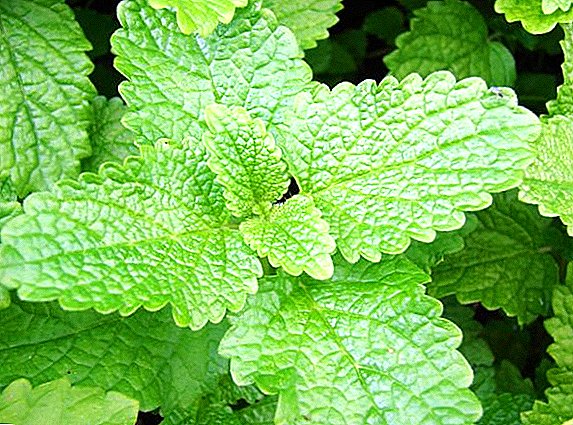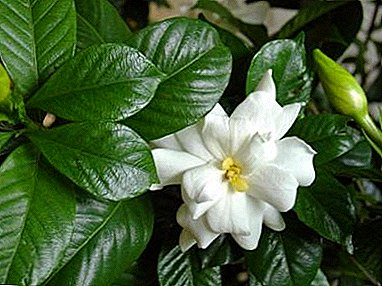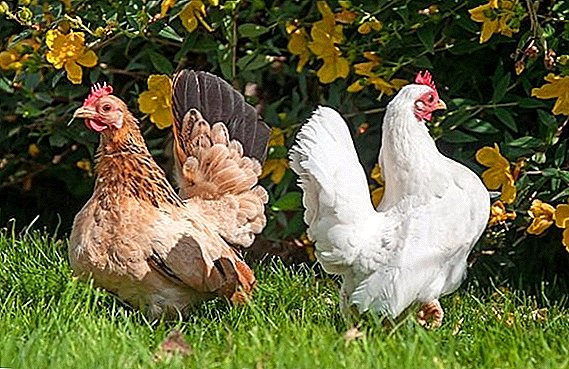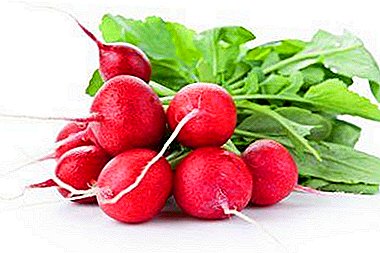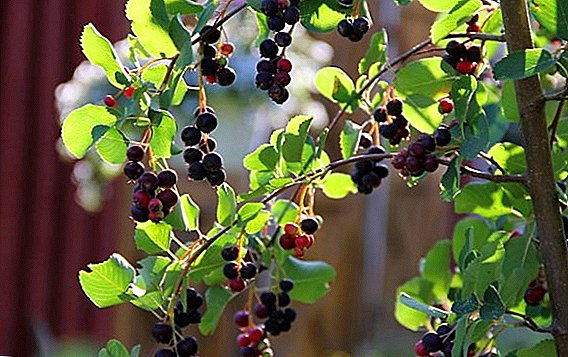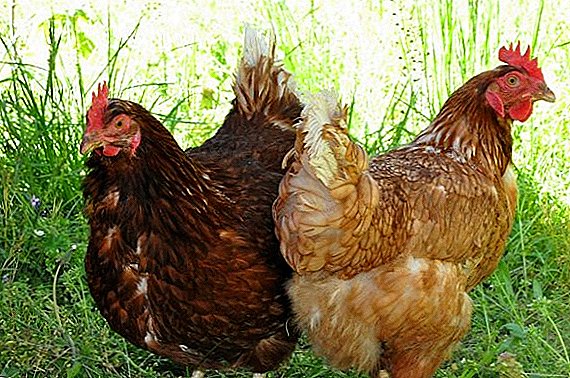 Proper nutrition guarantees chickens excellent health and high productivity. Therefore, in spite of their omnivorous nature, breeders must clearly understand which products will benefit the feathered wards, and which will harm. Next, we will talk about the intricacies of the chicken ration, its vegetable component and teach you how to competently make a menu for poultry to get high-quality meat and eggs.
Proper nutrition guarantees chickens excellent health and high productivity. Therefore, in spite of their omnivorous nature, breeders must clearly understand which products will benefit the feathered wards, and which will harm. Next, we will talk about the intricacies of the chicken ration, its vegetable component and teach you how to competently make a menu for poultry to get high-quality meat and eggs.
Can I give potatoes to chickens
Many farmers, without even thinking, give their pets a different waste from their table, as well as potato peelings. But veterinarians strongly disagree with this approach. After all, chickens are important products that do not just satisfy the feeling of hunger, but provide their organisms with vitamins and minerals.
Did you know? The name "potato" has Italian roots and is derived from the word "tartufo" ("truffle"), and the so-called root crop was named because of the external resemblance to this mushroom.
Chicken diets must include food rich in proteins, fats and carbohydrates, since these substances are the main component of eggs, and also provide the bird with energy balance and full functioning of internal organs. No less important are the B, A, C, H, PP, D vitamins and minerals.  It is this nutritious set that can provide chicken potatoes, which, in addition to the above substances, contain in large quantities:
It is this nutritious set that can provide chicken potatoes, which, in addition to the above substances, contain in large quantities:
- calcium;
- potassium;
- manganese;
- magnesium;
- iron;
- sulfur;
- chlorine;
- iodine;
- fluorine;
- molybdenum;
- zinc;
- selenium;
- copper;
- chromium;
- boron;
- tin;
- vanadium;
- titanium;
- cobalt;
- silicon;
- nickel;
- aluminum;
- sodium;
- phosphorus:
- starch;
- amino acids.
Kurovods should consider whether oats, garlic, cod-liver oil, yeast, foam plastic, bread, bran, meat and bone meal and peas can be given to chickens.
Getting into any living organism, the root crop works as alkali, neutralizing acids. It is known that such an environment is unfavorable for pathogens. According to experts, the potato is also useful in that it promotes metabolic processes, improves the blood formula and the work of the digestive organs, but not all of its species will benefit the expected benefits of the birds. 
Raw tubers
Such food is strictly contraindicated for poultry. The ban on the introduction of raw potatoes in the diet of chickens due to the complexity of its digestion. This is a very coarse food that is poorly absorbed in the body, as a result of which the birds may develop intestinal disorders and related diseases, therefore, raw tubers should not be given to chicks or adult individuals, even in small quantities.
Important! So that chickens do not have avitaminosis, they are recommended to be fed with pork and fish oil, silage, bread crumbs and fresh greens..
Boiled potatoes
This is the only acceptable option for chicken food.. In the cooked form, root vegetables are very useful for feathered pets, since they retain their nutritional value and do not cause difficulties during digestion.
Moreover, boiled potato pieces have a beneficial effect on the walls of the stomach, improve appetite. They must be added to the wet mash, and can also be given as a separate feed. 
It is important when selecting tubers to reject specimens with green peel, irregular eyes, dry or wet putrid lesions and plaques. Ideally, potatoes selected for cooking can be of any size, but always with a dry and nasty skin that is natural for a certain grade of color with no visible damage or painful signs.
Important! For the full development of the skeleton in chickens experienced poultry farmers advise to put in an open-air cage an additional feeder with a fine fraction of gravel, lime, and also a shell of sea or river origin. For this purpose, it is necessary to add chopped chalk and bone meal to the mash.
It is possible to enter this ingredient into a chicken diet from the 15th day of life, starting with a 4-gram daily portion. In the future, as the wards grow, the dosage is increased in such a way that by two months the youngsters eat at least 40 grams of this product daily.  In order to properly balance the amount of boiled potatoes in the nutrition of chickens, use the following table:
In order to properly balance the amount of boiled potatoes in the nutrition of chickens, use the following table:
| Recommended daily dosage of boiled potatoes for chickens | |
| Age by day | Amount of feed, g |
| 11-20 | 4,0 | 21-30 | 10,0 |
| 31-40 | 20,0 |
| 41-50 | 30,0 |
| 51-60 | 40.0-50.0 |
Potato peelings
Despite the desire of every farmer to maintain a waste-free economy, raw potato peelings for chickens are a real disaster. The fact is that the skin accumulates toxic substance solanine.
It will probably be useful for you to familiarize yourself with how to properly feed the chickens with grass, as well as how to feed the chickens.
Under the action of the sun's rays, it is increasingly manifesting itself, which affects even the appearance of tubers - they become green and solid. Such feed can not get into the bird feeder, because it is poisonous to them.  If you carefully boil the selected potato waste and add them to the mash, the chickens will be satisfied. According to experts, nutrients are located in the root in maximum quantities just under the peel. But it is unacceptable to scald the billet, it must be cooked until the pulp is completely disintegrated.
If you carefully boil the selected potato waste and add them to the mash, the chickens will be satisfied. According to experts, nutrients are located in the root in maximum quantities just under the peel. But it is unacceptable to scald the billet, it must be cooked until the pulp is completely disintegrated.
Choose only high-quality cleaning, where there are no green areas, deformation of unknown origin, rot and dried cuts. After cooking, chop the contents in a saucepan and add it to the main feed.
Many channels carry out these manipulations in the evening in order to feed their wards in the morning. But veterinarians warn that birds do not like cold potatoes, and they should not be given it hot. Also note that a large amount of potato peel can cause malfunctions in the digestive tract of chickens.
Contraindications and harm
Oddly enough, but for all its usefulness, the potato tops the ranking of the most dangerous products for chickens. This is due to the presence in its composition of plant poison, consisting of crystals of glucose and solanoidin. In especially large quantities, it is found in green, immature and germinated tubers, as well as in the tops of all solanaceous plants.  It has been scientifically proven that solanine accumulations remain in root vegetables even after long cooking. Unfortunately, heat treatment is not able to destroy these substances. Potato tops can also harm the birds.
It has been scientifically proven that solanine accumulations remain in root vegetables even after long cooking. Unfortunately, heat treatment is not able to destroy these substances. Potato tops can also harm the birds.
Under natural conditions, when free-range, they almost do not pay attention to rampant bushes, but in a closed enclosure, where the choice of herbs is limited, they can willingly pounce on green stalks. Subsequently, chickens suffer from diarrhea and abnormalities in the organs of the gastrointestinal tract from the received dose of poison.
Did you know? Chickens, despite the prevailing stereotype about the limited capabilities of their brains, can memorize about a hundred people, recognize their owner and have a good time orientation.
What else can feed chickens
The vegetable component in the chicken diet satisfies the need of birds for fiber, ashes, carbohydrates, vitamins and minerals, especially it is relevant in the early stages of development, when the body is formed and enters the phase of puberty. But, in addition to vegetables, hens should be given daily meat and bone waste, which has a beneficial effect on the health and productivity of birds. 
A fish
For chickens, this product is a source of easily digestible protein, polyunsaturated fatty acids, vitamins and minerals. In addition, its composition contains a lot of calcium, which is necessary for good indicators of egg production.
Important! Chickens can not be fed with citrus peel, celandine, ambrosia, salty and sweet foods. The digestive system of the bird will not be able to digest them.
Experienced poultry farmers recommend giving raw waste to the birds after cleaning the fish, as well as tails, heads and bones left after your dinner. Small chickens should add fish meal and fat to the feeders.  In order to correctly calculate the rate of fish for each chicken head, depending on the age characteristics of bird growth, use the following table:
In order to correctly calculate the rate of fish for each chicken head, depending on the age characteristics of bird growth, use the following table:
| Recommended Daily Allowances consumption of fish products hens | ||
| Product name | Amount of feed, g | Bird age |
| Fish waste, raw and boiled fish of any origin | 5,0 | 22-47 weeks |
| 10,0 | 47 or more weeks | |
| Fish flour | 3,0-4,0 | 22-47 weeks |
| ― | 47 or more weeks | |
| 6,0 | 5-30 days | |
| 3,0 | 31-63 days | |
| Fish fat | 3,0 | 22-47 weeks |
Experienced dogs advise to adhere to the rules of feeding poultry:
- It is strictly forbidden to feed the birds salted and damaged fish.
- The boiled product is better acquired.
- There is no need for daily eating of waterfowl. For full-fledged development, it is enough to mix this ingredient 2-3 times a week.
- Keep in mind that after the fish the bird is always thirsty, so there must be fresh water in the shelves. Otherwise, through dehydration, pets may have problems with defecation.
- Raw chicken is reluctant to eat, so it is advisable to mix it with the main feed as an additive.

Cabbage
In the winter period, when the proportion of green mass in chicken feed decreases, it is important to take care of providing the pet with vitamins. For this purpose, many poultry farmers hang whole heads of white cabbage in a chicken coop so that their livestock would bite.
Important! Chickens up to ten days of age should be fed every 2 hours up to 10 times a day, and during the last feeding the youngs should be full.
This vegetable contains nutrients that have anti-inflammatory properties, as well as stimulate metabolic processes and the active production of gastric juice. The presence of vitamins B, A, C, K, PP, as well as numerous minerals prevent infectious diseases and beriberi.  The sauerkraut will also bring benefit to the feathered, but before feeding it must be thoroughly rinsed with salt and left for a while in a colander to drain excess water.
The sauerkraut will also bring benefit to the feathered, but before feeding it must be thoroughly rinsed with salt and left for a while in a colander to drain excess water.
We recommend reading about how much feed you need to lay a chicken a day, how to make mash, mineral supplements and feed for laying hens.
To correctly calculate the rate of this product, use the table below:
| Recommended daily rate white cabbage for chickens | |
| Age | Amount of feed, g |
| 11-20 days | 4,0 |
| 21-30 days | 10,0 |
| 31-40 days | 13,0 |
| 41-50 days | 15,0 |
| 51-60 days | 18,0 |
| 22-47 weeks | 30,0-40,0 |
| 47 or more weeks | 40,0 |

Beans
Legumes for poultry are an inexhaustible source of proteins, carbohydrates, fiber and pectins.
In addition, the available vitamins PP, B1, B2, B3, B6, E, C, as well as micro and macro elements improve the blood formula, contribute to the normalization of the internal organs and are displayed on the quality of eggs. Beans restore metabolism and provide the bird with vital energy for the whole day.
Important! To prevent the development of helminthiasis in chickens, veterinarians advise every month for 3 days to give wards of different ages fresh decoction of chamomile and sorrel.
Raw beans are unacceptable for feeding any living creatures, so the beans must be pre-cooked until softened. After cooking in a crushed form, it can be mixed with the main feed, this is especially true for the grown up young stock.  In order not to be mistaken with the calculations necessary for each head of a livestock portion of boiled beans, follow the data in the table:
In order not to be mistaken with the calculations necessary for each head of a livestock portion of boiled beans, follow the data in the table:
| The recommended daily intake of beans in chickens | |
| Bird age | Amount of feed, g |
| 21-30 days | 2,8 |
| 31-40 days | 3,0-3,2 |
| 41-50 days | 3,5 |
| 51-60 days | 4,0-5, 0 |
| 22-47 weeks | 10-20 |
| 47 or more weeks | ― |
Important! Strictly monitor the amount of feed absorbed by chickens - overfeeding will have a bad effect on the parameters of egg production. Therefore, it is best to feed adult pets 2 times a day, and in the presence of a spacious walking range, only morning feeding will be sufficient..
Peas
Peas contain dietary fiber, unsaturated fatty acids, starch and vegetable proteins. Especially rich in mineral and vitamin composition of this legume.  Together, these components regulate the digestive processes, remove toxins and slags from the body, and also act as anthelmintic. Experienced canals note that the young, who occasionally feed on pea porridge, are noted for their strong immunity and good survival.
Together, these components regulate the digestive processes, remove toxins and slags from the body, and also act as anthelmintic. Experienced canals note that the young, who occasionally feed on pea porridge, are noted for their strong immunity and good survival.
Based on the fact that chickens are almost omnivorous creatures, you need to know what foods you can feed chickens and what not.Veterinarians welcome the addition of the bean ingredient to the mash, but warn that its excess can cause intestinal discomfort in chickens. Therefore, it is important for each bird, depending on its age category, to correctly determine the required feed rate. The following table will help you:
| Recommended daily intake cooked peas for chickens | |
| Bird age | Amount of feed, g |
| 31-40 days | 0,6 |
| 41-50 | 1,2 |
| 51-60 | 2,5 |
| 22-47 weeks | 3, 5-5,4 |
| 47 or more weeks | 6,0-8,0 |

Carrot
Successful rearing chickens involves the introduction of carrots in their diet. Carotenes in it, phytofluenes, lycopenees, starches, essential oils, flavonoids, as well as vitamins and minerals help normalize the functioning of internal organs. In general, the vegetable has an antiseptic, choleretic, analgesic and anthelmintic effect.
Did you know? The number of chickens is three times the number of people on the planet.
In addition, it stimulates the digestive tract, improves appetite and reduces the toxic effects of antibiotics on the body. This is true in cases of treatment of birds or preventive measures for a number of diseases.  It is best to give carrots to chickens at the end of autumn, when the roots are ripe and accumulate the maximum amount of nutrients. Before feeding, the crop should be washed from the dirt of the garden, then it is ground with a grater or boiled. Of course, more benefit will be from the raw product.
It is best to give carrots to chickens at the end of autumn, when the roots are ripe and accumulate the maximum amount of nutrients. Before feeding, the crop should be washed from the dirt of the garden, then it is ground with a grater or boiled. Of course, more benefit will be from the raw product.
Important! It is unacceptable that in the feeders of chickens remained spoiled wet food. Clean each tank thoroughly before each feeding. Otherwise, by negligence, you can lose all livestock..
Calculate the necessary norms of the root for each chicken head, you can, guided by the table below: 
| Recommended daily allowances of carrots for chicken diet | |
| Bird age | Amount of feed, g |
| 1-3 days | 1,0 |
| 4-10 days | 3,0 |
| 11-20 days | 7,0 |
| 21-30 days | 10,0 |
| 31-40 days | 13,0 |
| 41-50 days | 15,0 |
| 51-60 days | 18,0 |
| 22-47 weeks | 10,0 |
| 47 or more weeks | ― |
Agree that a very important part of the diet are animal products - sources of protein. Read all about feeding chickens to worms.
Keeping chickens requires responsibility from the breeders. If you want the wards to thank high-quality eggs and juicy meat, strictly follow the rules of feeding - this is the most important factor determining the future productivity of the herd. We hope our article will help you to correctly create a balanced diet for birds.



